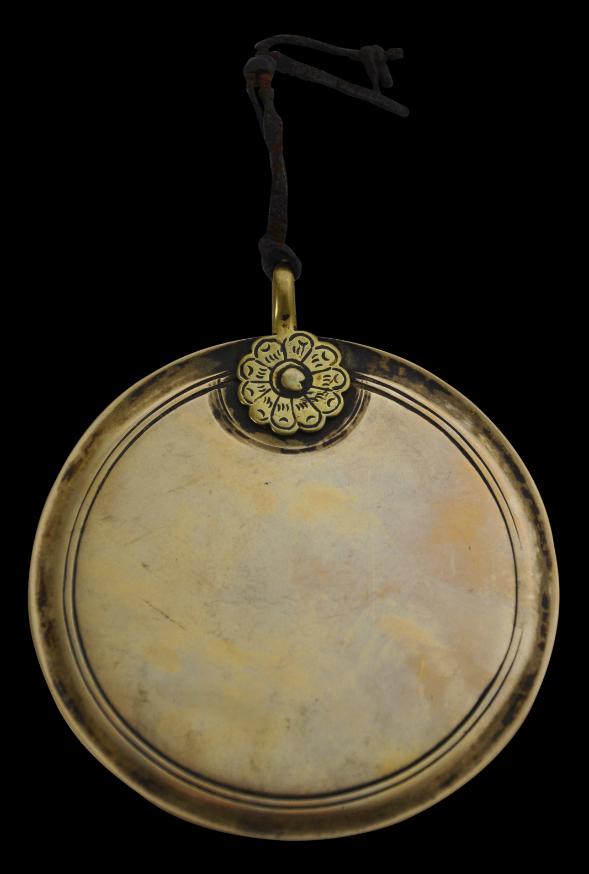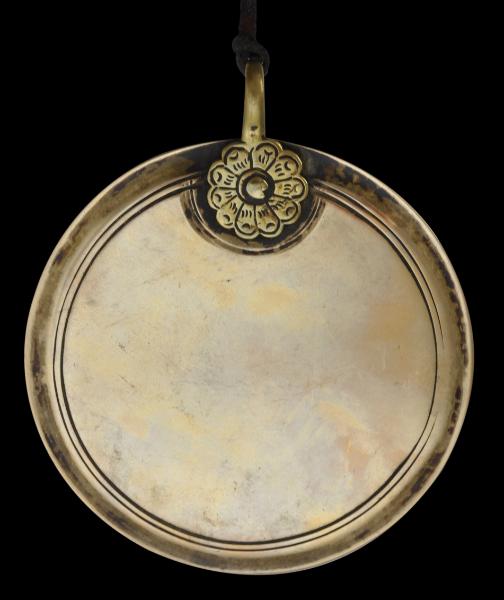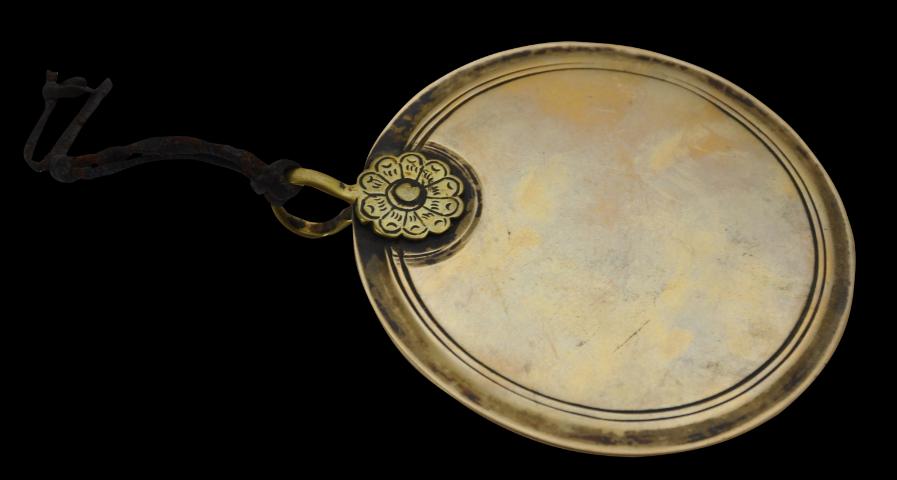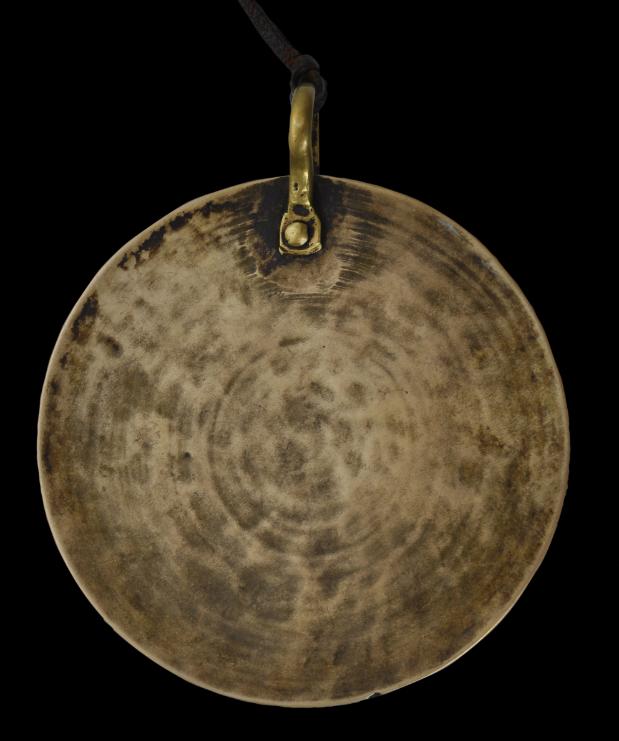
Ritual Pendant Polished Gilded Brass ‘Mirror’ (Melong)




Ritual Pendant Polished Gilded Brass ‘Mirror’ (Melong)
Tibet
circa 17th century
height including loop: 12.9cm,
length: diameter: 11cm, weight: 145g
This heavy mirror is of polished and gilded brass. It has a wonderful patina and quality not adequately captured in the photographs.
It comprises a heavy disc of brass with a bevelled edge. A suspension loop has been attached and a multi-petalled flower in gilded brass hides the rivet used to attach the loop to the mirror.
Mirrors have special meaning in Tibetan Buddhism. Ritually, they symbolise the voidness of the world and the emptiness of substances. Such mirrors were used ritually, often by oracles, and also worn as chest pieces, perhaps to repel evil. Examples of sets of mirrors that appear to have been worn by Tibetan soldiers are known. These seem to have served a talismanic, protective function. Polished metal mirrors also were hung above doors in temples and monasteries, again as protective devices.
A related example attributed to ‘circa 14th century’ is illustrated in Weldon & Casey Singer (1999, p. 141).
This example is beautiful and with a wonderful patina. The gilding has worn to a soft, gentle hue. The item could be readily worn as a large pendant.
References
Lama, M.N., Ritual Objects & Deities: An Iconography on Buddhism & Hinduism, Lama Art, 2003.
LaRocca, D.J., Warriors of the Himalayas: Rediscovering the Arms and Armor of Tibet, Metropolitan Museum of Art, 2006.
Weldon, D., & J. Casey Singer, The Sculptural Heritage of Tibet: Buddhist Art in the Nyingjei Lam Collection, Laurence King/Weatherhill, 1999.
Provenance
UK art market
Inventory no.: 3759
SOLD

